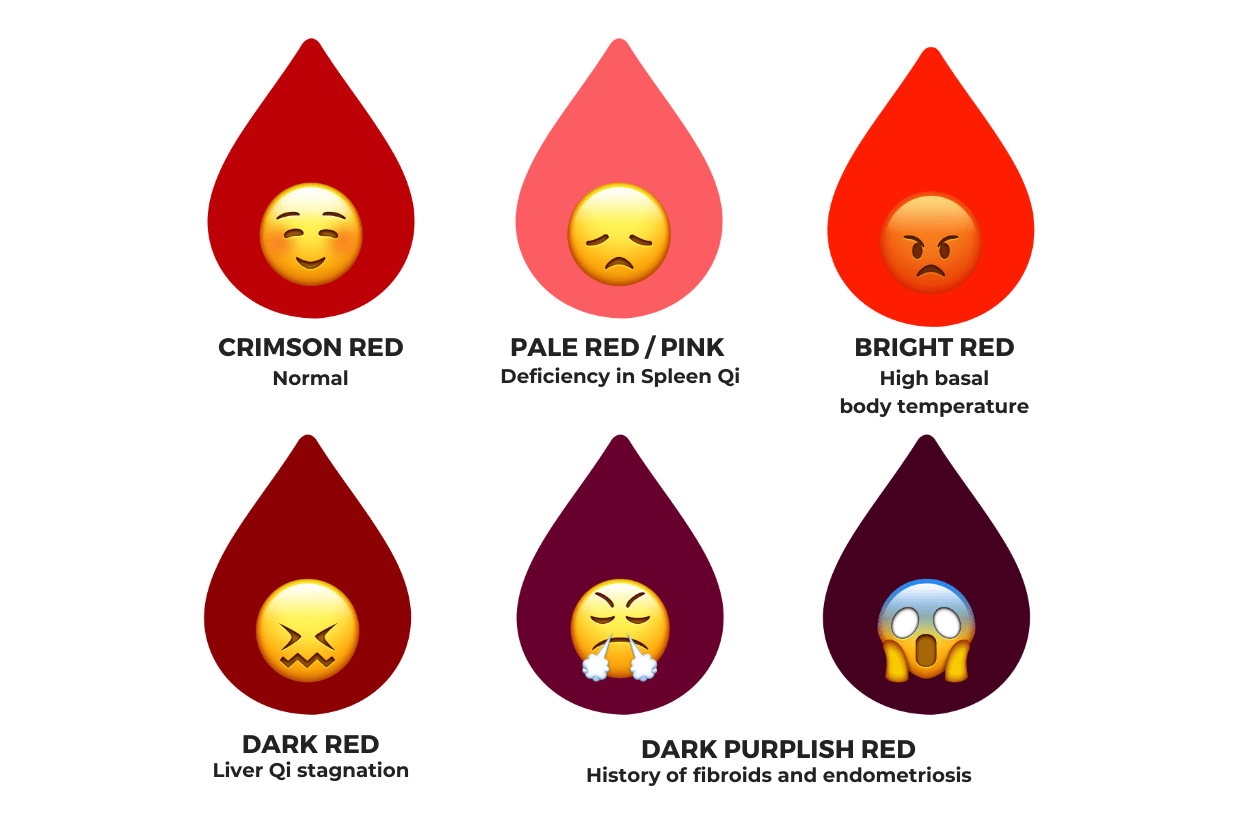When you bleed during your periods, the blood you see is slightly different than what oozes out when you get a normal injury, say cutting your finger. The blood on your pad or tampon is actually a mixture of both blood and tissue from the lining of your uterus. So the colour of your period blood is determined by this and many other factors. Don’t worry, there isn’t anything seriously wrong if you notice your period blood colour changing, as this occurs frequently across cycles and also varies day to day and across different women. A person’s diet, lifestyle, environment, and hormonal changes all can cause variations in period blood. However, it is important to discuss what period blood colour says about your health since it could be an indication of an underlying health problem. Again, what the normal blood colour is for you, could be abnormal for another female. This is why it is important to address the reasons why period blood colour changes and what each colour means.
Black
If you see black blood in your pad or tampon especially towards the end of your period, there is nothing to be alarmed about. Black period blood colour is actually a sign of old blood, which is just taking a long time to leave the uterus. It is actually red blood that has been oxidised to brown and then finally turns black. In some cases, black blood can also suggest a blockage in your vagina, which is seen along with other symptoms like fever, foul-smelling discharge, difficulty urinating, and itching around the vagina. It is time to visit the doctor only if you notice these symptoms, as the appearance of black period blood can be quite normal.
Brown/Maroon
Brown or dark red blood is also a sign of blood turning old and is a common sight towards the end of your period. It can appear in a variety of shades in the stages of oxidation from red to black. Brown blood can also be an early indication of pregnancy and is referred to as ‘implantation bleeding‘ by doctors. Brown menstrual blood colour during pregnancy could be a sign of miscarriage or ectopic pregnancy, where the fertilized egg implants to the fallopian tube instead of the uterus. The appearance of brown blood after giving birth is known as Lochia, which is your body’s way of expelling excess tissue and blood from the uterus and is completely normal postpartum. But you should see a doctor if you experience very heavy bleeding after giving birth.
Bright Red
The bright red period colour suggests that the blood is fresh. Your period may start with bright red colour and darken towards the end. Some womxn may also experience fresh bright red blood throughout their period. Bright red blood is usually a sign of steady flow and is a healthy period blood colour. In very rare cases, bright red bleeding could indicate cervical cancer. Other symptoms of cervical cancer include extremely heavy periods, bleeding after sex, periods that last longer, foul-smelling vaginal discharge, loss of appetite, and sudden weight loss. So as long as you get your periods regularly and there is no unexplained change in your menstrual cycle, bright red blood is considered totally normal.
Pink
Pink menstrual blood can be seen when your blood mixes with cervical fluid. There can be several reasons why a pink tinge can show up in your period blood. One of the primary causes can be anemia. If you feel lightheaded and dizzy or experience other symptoms of anemia along with pink blood, you must visit your doctor. However, using hormonal control pills also tends to lower estrogen levels in your body and cause a lighter flow with a pinkish hue during menstruation. Sexual intercourse can cause little tears in the vagina and cervix and blood from these tears when mixed with vaginal fluid can be released in the form of pink discharge.
Orange
Blood can turn orange when it combines with cervical fluid. It could be a sign of implantation bleeding during pregnancy. An infection, such as bacterial vaginosis or trichomoniasis, is also often indicated by orange blood or discharge. Other telltale symptoms of infection include vaginal itching, pain, and foul-smelling discharge. Although orange spotting or bleeding does not necessarily indicate a vaginal infection, you can maintain vaginal hygiene during periods by using a menstrual cup.
Grey
Gray discharge is typically an indication of bacterial vaginosis, which is caused by an imbalance of good and harmful bacteria in the vaginal canal. But you can look out for other symptoms like painful urination, fishy vaginal odor, and itching. Usually, antibiotics are prescribed by a doctor for bacterial vaginosis and the infection is treated within days.
When Should You See The Doctor?
Menstrual blood can change in colour and texture throughout your period and can also vary depending upon the lifestyle, environment, age and other factors. Any sudden change in period colour that you haven’t noticed before accompanied by symptoms like unusual vaginal discharge, foul smelling odour, thick gray or white discharge, itching around the vagina, and fever are some reasons to go visit your doctor.




